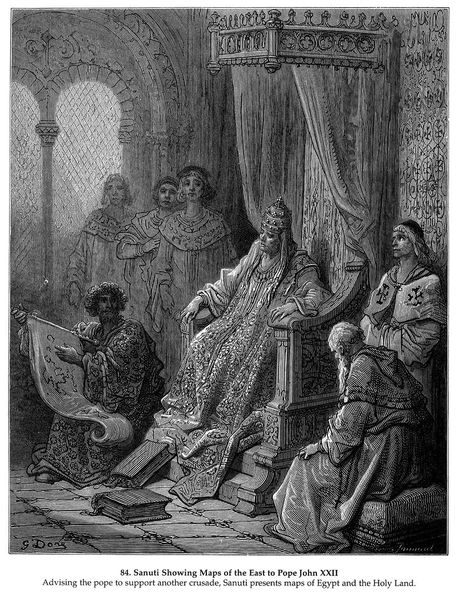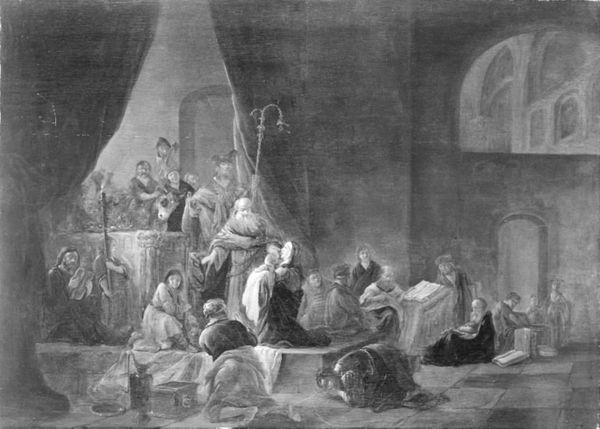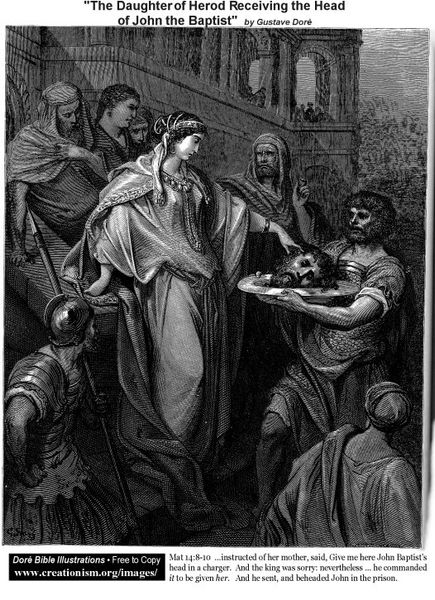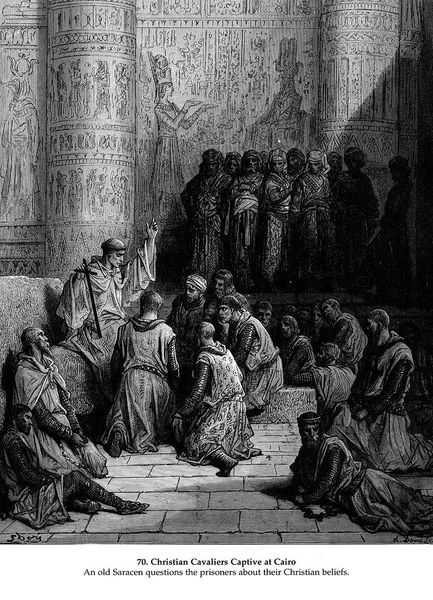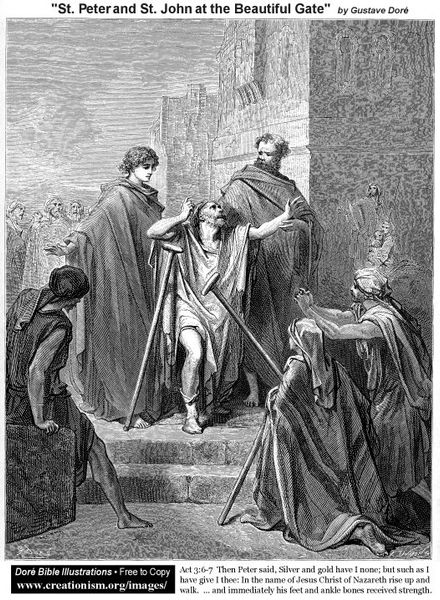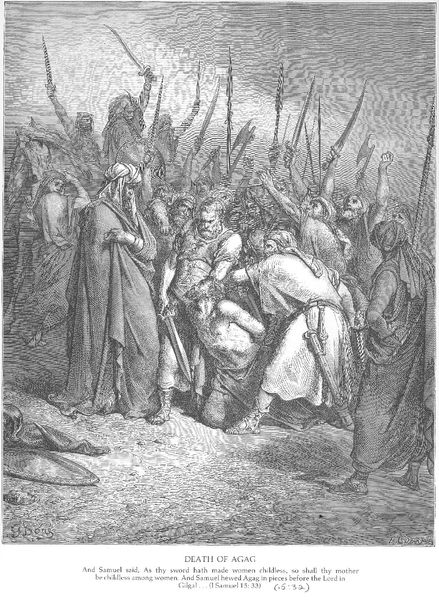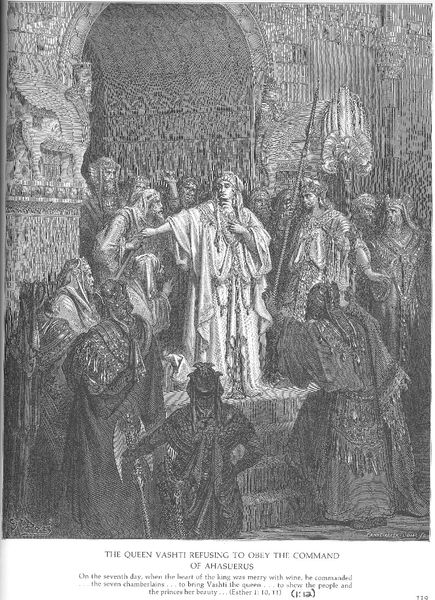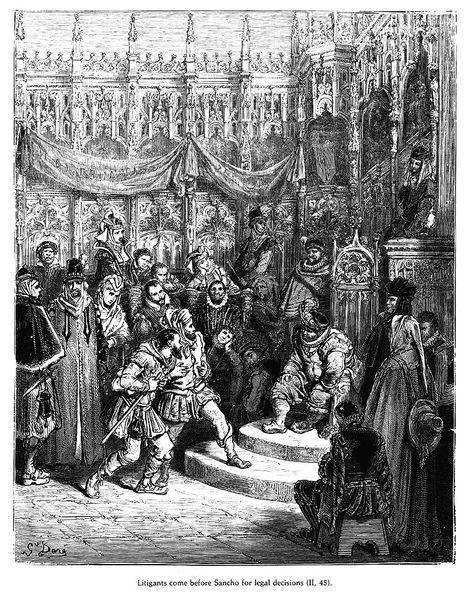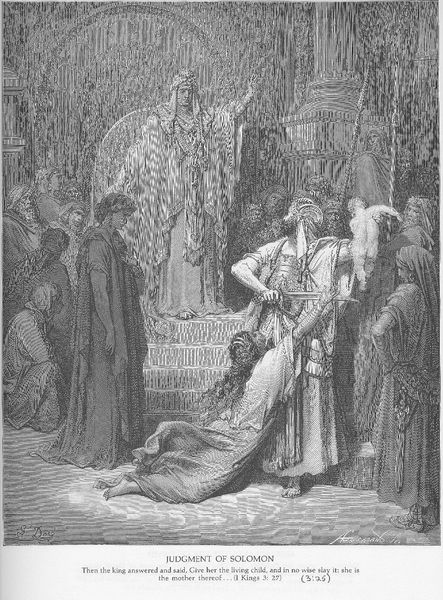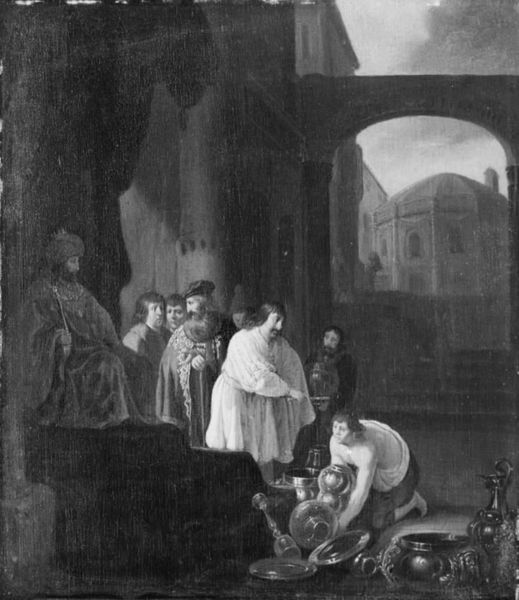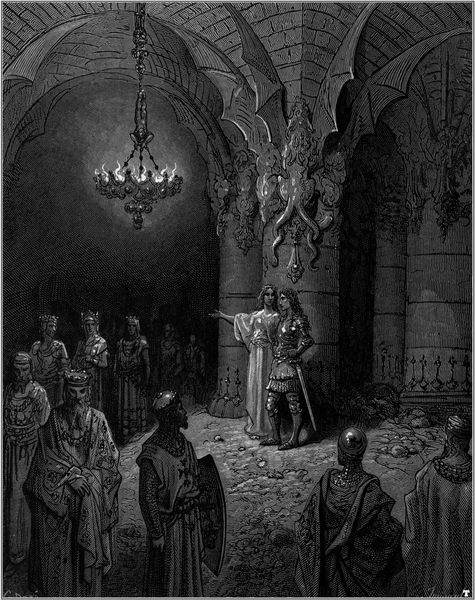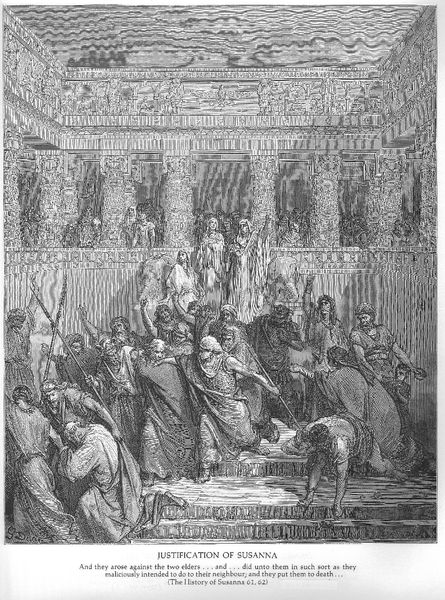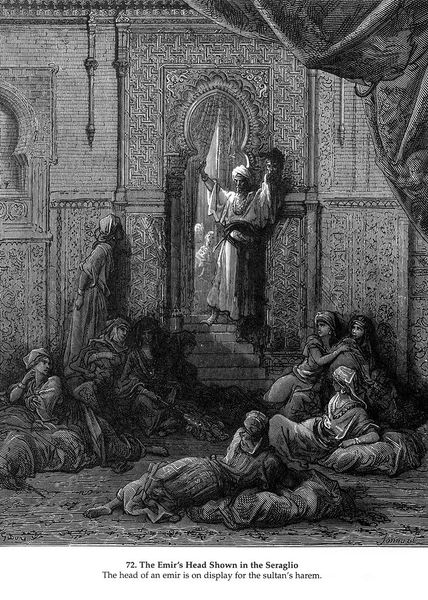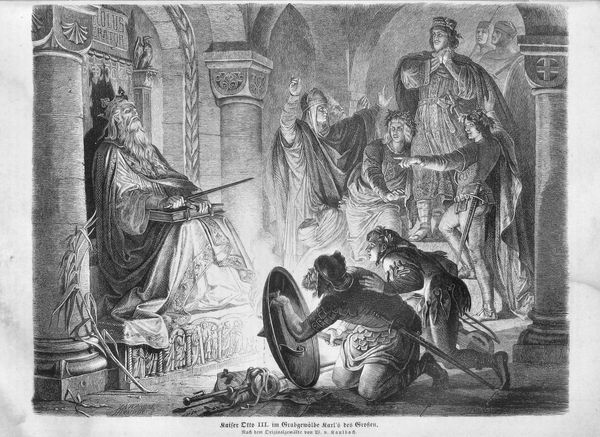
drawing, engraving
#
drawing
#
medieval
#
narrative-art
#
sculpture
#
figuration
#
form
#
romanticism
#
black and white
#
line
#
history-painting
#
monochrome
#
engraving
#
monochrome
Copyright: Public domain
Curator: Looking at this piece, titled "Idylls of the King" by Gustave Doré, I’m immediately struck by the intensity of the scene, all captured in monochrome. Editor: Yes, the stark contrast definitely dictates the dramatic narrative, doesn't it? And it is made with engraving. What strikes me most is how Doré has structured the space – the architecture almost boxes in the figures, intensifying the sense of claustrophobia and impending doom. Curator: It certainly enhances the feeling that everything is interconnected. This artwork would have been commissioned for publication. Romanticism returned to narrative to validate moral or ethical perspectives about how societies function. Editor: You are right. And what of the central figures? The clean lines on their faces versus the heavy shadows cast upon their robes; this deliberate interplay between light and dark really shapes our interpretation of their emotional state and importance to the overall composition. Curator: Absolutely. There’s also something to be said about the medium itself—engraving. It allows for such incredible detail and precision, evident in the rendering of textures, fabrics, and the emotional nuance conveyed through facial expressions. Consider who was consuming art. Engravings could be made available to a much wider audience. Editor: The artist skillfully manipulates these qualities to build depth, both visually and psychologically. Note the careful distribution of tonal values across the scene, guiding the viewer’s gaze. The vanishing perspective focuses your eye to a focal point: the actors, their props and victims on the stage, so to speak. Curator: Also interesting how Doré adapted classical narratives and medieval settings for the 19th-century audience. How does one re-stage such legends for their specific concerns? This act of selecting, adapting, publishing is what breathes new life into these works and connects across centuries. Editor: In the end, Doré's visual structure amplifies the narrative's tragic emotional power, leaving us to wonder what stories it tells or warns against even after we look away. Curator: Agreed. And by making it widely accessible via engraving, he opened the narrative up for dialogue and reflection, underscoring art's role as a social and cultural vehicle.
Comments
No comments
Be the first to comment and join the conversation on the ultimate creative platform.
